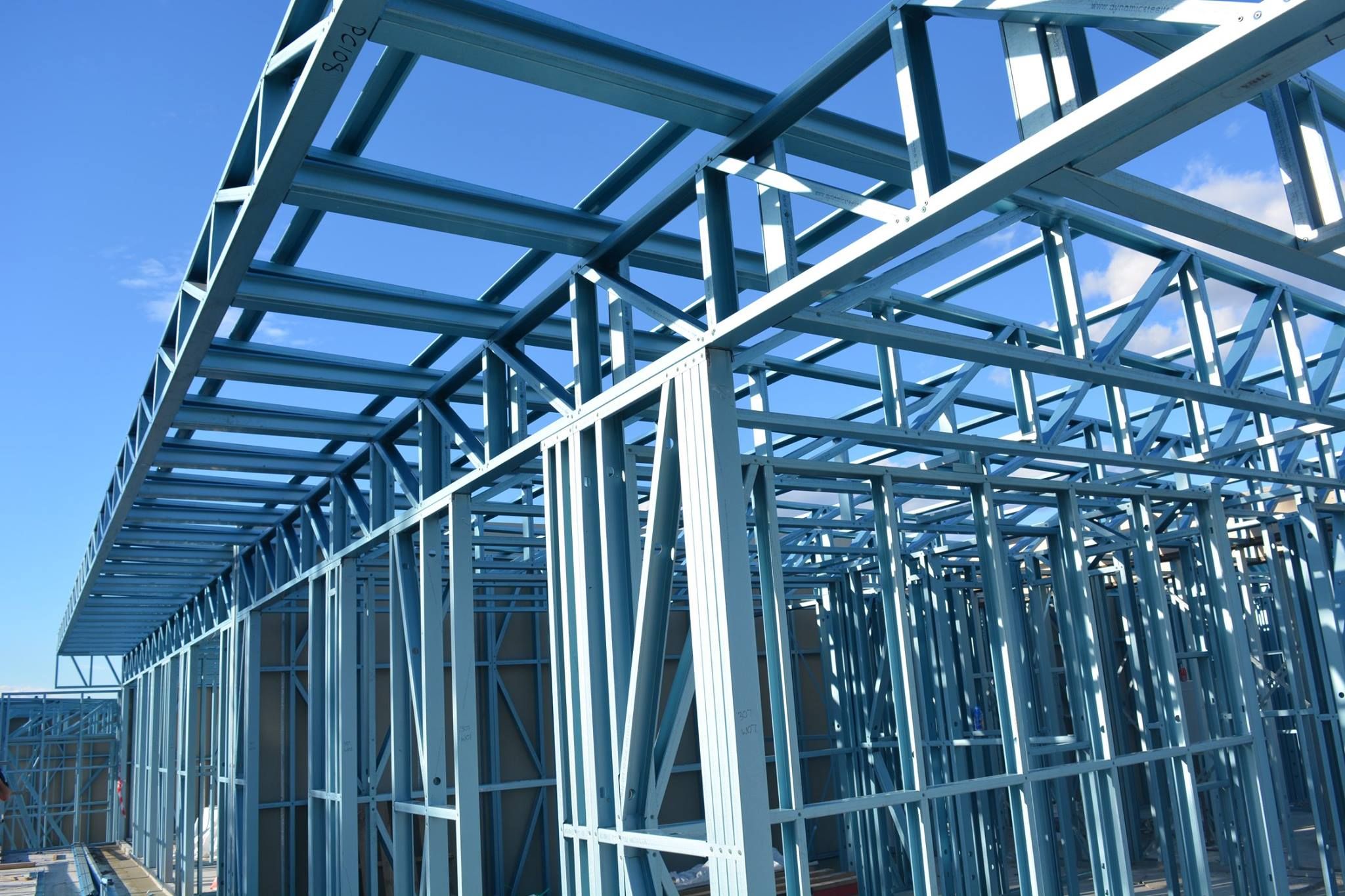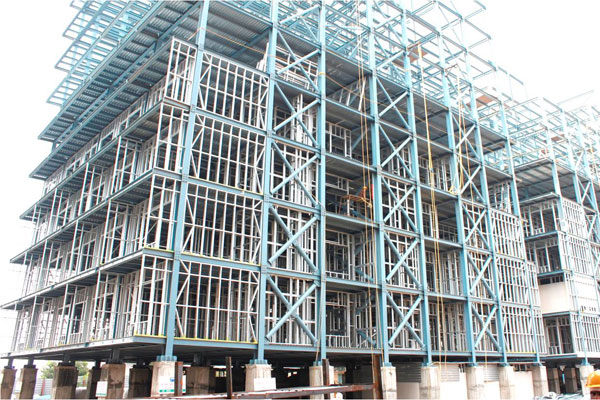Due to its outstanding performance, steel frame structure has become the most common structural form for a variety of high-rise buildings, commercial complexes, and public buildings. The charm of modern architectural art is fully embodied through steel frame structure.
Core Advantages
High strength and light weight are the advantages of steel frame buildings. Compared with concrete structures, steel frame buildings can reduce their own weight by approximately 30%. This effectively lowers the foundation load and foundation construction requirements, significantly reducing construction costs. Additionally, due to steel’s excellent ductility, it can effectively absorb seismic energy, giving steel frame buildings superior earthquake resistance.
 Because steel has much higher structural strength per unit volume than reinforced concrete, engineers can design larger structural spans for steel frame buildings. This provides greater interior space and greater flexibility for dividing areas to meet diverse usage needs. Furthermore, steel frame buildings’ components are generally highly standardized, making installation simple and convenient. Construction speed for steel frame buildings far exceeds that of traditional buildings.
Because steel has much higher structural strength per unit volume than reinforced concrete, engineers can design larger structural spans for steel frame buildings. This provides greater interior space and greater flexibility for dividing areas to meet diverse usage needs. Furthermore, steel frame buildings’ components are generally highly standardized, making installation simple and convenient. Construction speed for steel frame buildings far exceeds that of traditional buildings.
Quality Suppliers
Processing accuracy is very important for the components of steel frame buildings. In steel frame construction, each component is precisely stacked and connected like building blocks. If one or two components are not properly connected, it could affect the stability of the entire building. This imposes higher requirements on the accuracy of component processing.
During production, each component must be strictly processed according to the design drawings. From the type of steel to the thickness of the parts and the position of bolt holes, no errors are allowed. Therefore, when selecting suppliers, ones with advanced equipment such as laser cutting machines and 3D CNC machines, as well as rich design and production experience, should be chosen.
Strict Installation Requirements
Proper and tight installation of each component is also essential to ensure the quality of steel frame buildings. Currently, welding and high-strength bolt connections are the mainstream installation methods for steel frame buildings. During welding, qualified and skilled welders must be assigned. After welding, the seams need to undergo non-destructive testing.
When performing bolt connections, the friction surfaces of the connection points must be sandblasted or shot-peened in advance. This removes impurities from the surface of the friction face, ensures the flatness of the component surfaces, and guarantees that the connection meets the required anti-slip coefficient.
Post time: Oct-17-2025


